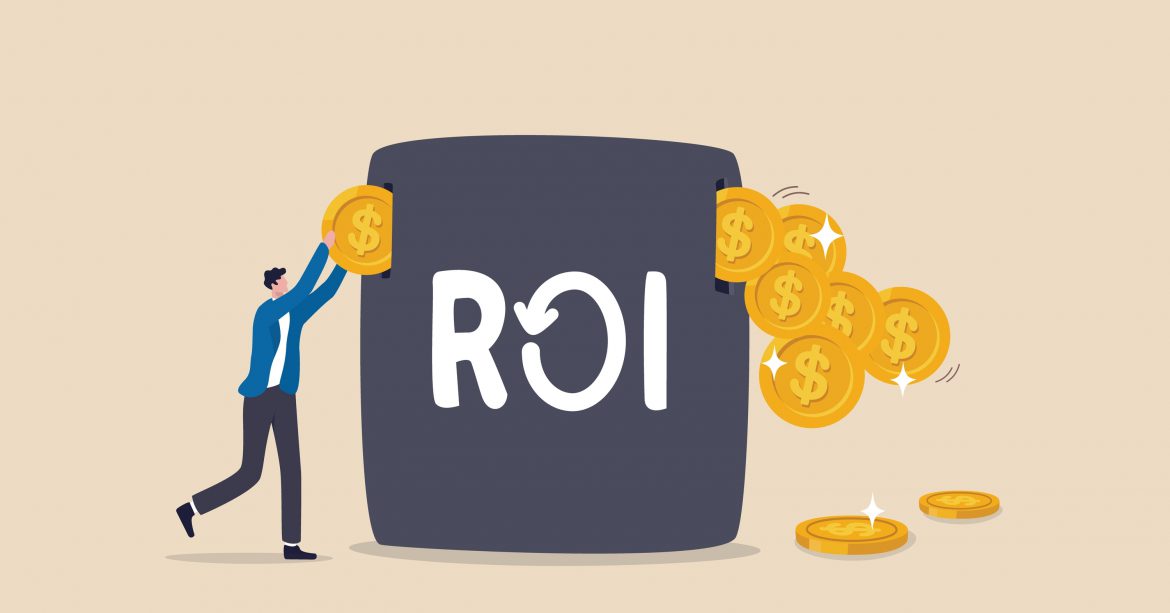How to show ROI with marketing strategies
ROI can simply be interpreted as the ratio that net profits take up of the overall cost. ROI is often the most critical estimation standard in a marketing campaign because it shows how efficiently the marketing budget spends on developing potential customers and increasing sales, etc.
In determining ROI, no matter which marketing strategy you’re using, claiming the overall investment figure is tricky. However, the following aspects can help you to check your returns and overall costs so that you can figure out if your marketing campaign is successful or not:
- The cost of time that you and your team spent on creating the marketing materials.
- The production cost, the total cost of supplies, services, and software that your team needed to create the campaign.
- You should know if your team spends any time or money on promotions? If so, add that to your total costs.
- You should build a tracking URL, or page analytics, to decide whether your content is bringing traffic to your product’s launching page.
- Sometimes, you may gain social media engagements, unexpected traffic boosts, or other bonuses from your campaign. You may receive non-financial returns that benefit your brand.
Before you begin ROI marketing
Using ROI would be a fantastic choice to determine your marketing investments. After all, you want the business to earn a profit through your plan. However, if your sales process is long and complex, you may need to verify or simplify ROI calculations. If you make the right option, efficiently estimating your marketing campaign will no longer be a problem.
Confirm your financial formulas
There are several figures you’ll need for your ROI calculations: Cost of goods sold (COGS): The cost of a physical product or service and the cost of producing it.
Marketing investment
Ideally, you just need to calculate the costs of online marketing or advertisement, but in some practical cases, it may be better to include the cost of media and production or time consumption.
Revenue
If you run various campaigns and have a long-term sales process, it can be hard to calculate revenue based on a particular campaign. You ultimately will need the help of your finance team.
Formula
Different companies have different ways of figure calculation, so carefully choose the best procedures for your company. Your finance team or accountant can guide you in this field.
Set an ROI threshold
Your whole budget and individual campaigns should have an ROI goal and a threshold. This way, you will have a margin to make the final decision and avoid risk. If a campaign ROI of your project can’t hit the threshold, don’t run it; if your project is an ongoing campaign over the ROI threshold, cut the budget and put your money elsewhere.
Decide your marketing budget
If you have an ROI goal and annual revenue/profit goals, you can calculate the overall cost you should spend on marketing. With the help of the ROI formula, you will quickly get the “investment” figure. Thus, you will ensure you’re preparing the proper budget to meet your goals.
Calculate Customer Lifetime Value
Customer lifetime value is the total business value of a customer during their relationship with your business. This is an essential metric because acquiring more companies with existing customers costs less than expanding new businesses. Therefore, focusing on marketing to existing customers is more conducive to business growth.
CLV is inseparable from another key metric, which is customer acquisition cost. Customer acquisition costs are your expenses to acquire new customers (to buy your product or service), including advertising costs, marketing costs, and costs associated with special offers. Therefore, the value of a customer’s purchase across the life cycle is critical when considering customer acquisition costs.
Calculate ROI on campaigns; monitor the process, and improve your outcomes
Tracking ROI can be difficult if you have complex marketing campaigns. However, if you have a commitment and a good reporting process, you can use ROI marketing to build solid measurements, even if you have to use some estimates. You will have a mature ROI calculation system to continually monitor your campaigns. You can test new ways to raise your ROI and spend your budget on campaigns that generate the most significant profit for your business.
After understanding ROI marketing, you will have an overview of your investments. The more you know ROI, the more confident you will be in your assets. Using ROI in making your marketing strategies will help you save time, money, and effort while making the most significant profits.
Image Source: Shutterstock_2101584946


